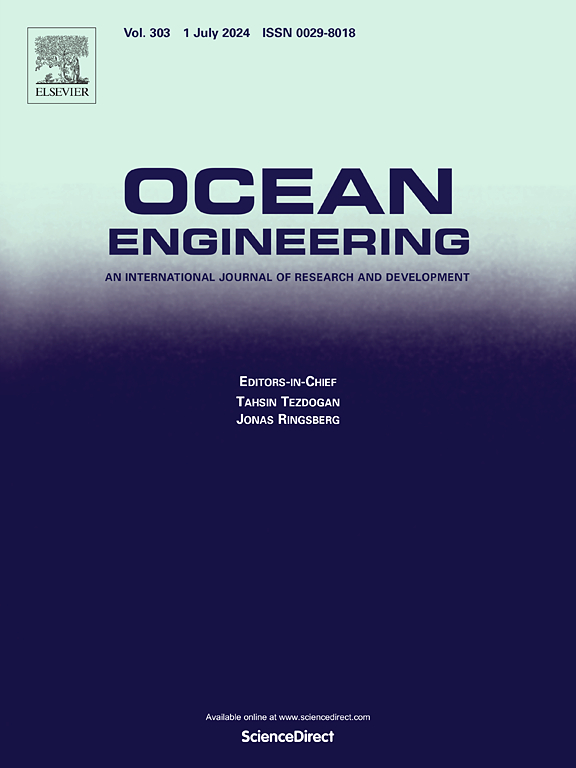A vertical docking system based on the autonomous underwater shuttle for seafloor communication relay
IF 5.5
2区 工程技术
Q1 ENGINEERING, CIVIL
引用次数: 0
Abstract
The autonomous seafloor observation system enables flexible deployment for long-term marine in-situ observations, but communication with land remains a challenge. This paper presents a novel vertical docking system based on an Autonomous Underwater Shuttle (AUS), designed to efficiently shuttle between the seafloor and surface for data relay. The designs of the AUS and Vertical Docking Station (VDS) are introduced, and a mathematical model of the AUS focusing on vertical motion is established with coordinate frames to address attitude singularity. A vertical docking strategy is proposed, including a DBLT-based AUS attitude control method and a three-stage guidance method integrating acoustic and optical guidance. Two motion modes—a gliding mode for long-range transit and a precise control mode for docking—are incorporated to balance energy consumption and docking accuracy. The system's feasibility is validated through simulations and experiments. The complete seafloor communication relay process was simulated under deep-sea conditions, confirming the effectiveness of the proposed vertical docking strategy. The DBLT-based attitude control method achieved rapid and precise regulation in both pool tests and lake trials. A 100 % vertical docking success rate and preliminary verification of the underwater communication relay function were demonstrated in lake trials, proving the effectiveness of the proposed system.
一种基于自主水下穿梭器的海底通信中继垂直对接系统
自主海底观测系统能够灵活部署长期海洋原位观测,但与陆地的通信仍然是一个挑战。本文提出了一种基于自主水下穿梭器(AUS)的新型垂直对接系统,该系统能够有效地穿梭于海底之间进行数据中继。介绍了自动对接系统和垂直对接系统的设计,建立了以垂直运动为中心的自动对接系统的数学模型,利用坐标框架解决了姿态奇点问题。提出了一种垂直对接策略,包括基于dblt的AUS姿态控制方法和声光结合的三级制导方法。两种运动模式——用于远程运输的滑翔模式和用于对接的精确控制模式——被纳入平衡能耗和对接精度。通过仿真和实验验证了系统的可行性。在深海条件下对整个海底通信中继过程进行了仿真,验证了垂直对接策略的有效性。基于dblt的姿态控制方法在水池试验和湖泊试验中都实现了快速精确的调节。在湖泊试验中,实现了100%的垂直对接成功率,并对水下通信中继功能进行了初步验证,证明了所提出系统的有效性。
本文章由计算机程序翻译,如有差异,请以英文原文为准。
求助全文
约1分钟内获得全文
求助全文
来源期刊

Ocean Engineering
工程技术-工程:大洋
CiteScore
7.30
自引率
34.00%
发文量
2379
审稿时长
8.1 months
期刊介绍:
Ocean Engineering provides a medium for the publication of original research and development work in the field of ocean engineering. Ocean Engineering seeks papers in the following topics.
 求助内容:
求助内容: 应助结果提醒方式:
应助结果提醒方式:


